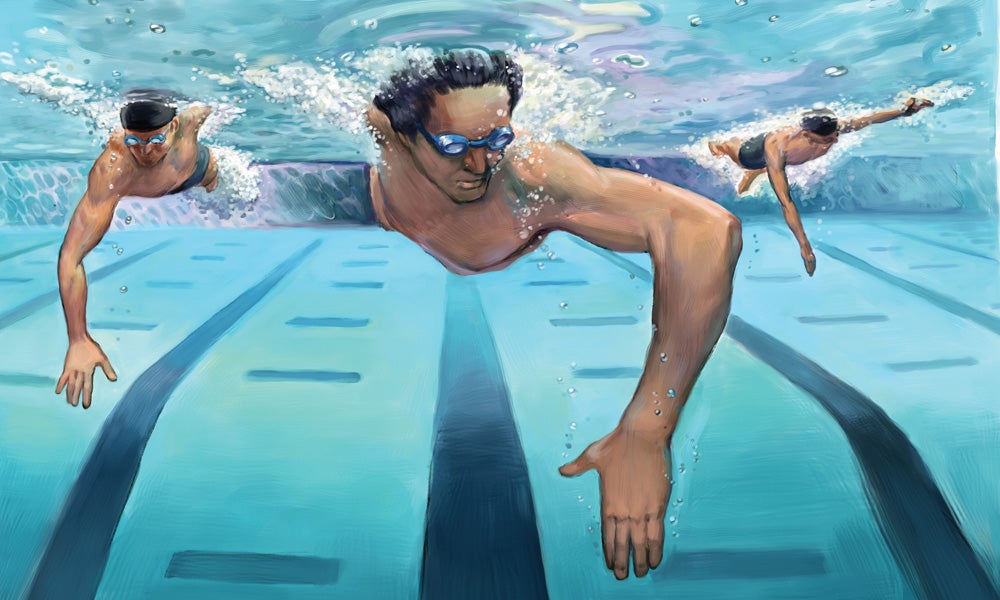Is The High-Elbow Pull Best For The Freestyle Swim Stroke?

Illustration by Matt Collins.
Theories abound about efficient technique, but here’s the real reason you should master a high-elbow pull.
This article was originally published in the May/June 2013 issue of Inside Triathlon magazine.
Last summer, an article was published in The New York Times titled “Delineating the Perfect Swim Stroke,” which received a lot of attention and some controversy among swimmers. The mechanical engineer at Johns Hopkins who oversaw the research study reviewed in the article, Dr. Rajat Mittal, had compared the forces generated by a deep arm pull to a stroke with a shallower arm pull and high-elbow position.
The high-elbow pull, for those who are not familiar, keeps the elbow close to the surface as only the hand and forearm lower to pull instead of dropping the entire arm as in the deep pull. Like the deep pull, the arm moves relatively straight back at the edge of the bodyline. (As an aside, I do not think the stroke used to represent the high-elbow pull is a perfect representation of the modern version of this technique.)
RELATED – Swim Speed Secrets: Drills
The authors of the study come to the conclusion that the deep pull produces more lift and propulsive drag force than the S-shaped pull with a high elbow, and although that motion requires greater shoulder strength to perform, the Times described it as the better way to pull in freestyle.
While Mittal’s study did in fact demonstrate that a deep pull enables a swimmer to push harder against the water, I draw a different conclusion for endurance swimmers from the data than was outlined in “Delineating the Perfect Swim Stroke.”
There are two common myths I have heard about the high-elbow freestyle pull. One is that it increases the power of the underwater pull, and the other is that it increases the surface area of the pulling arm/hand. I believe the real reason this motion results in a faster swim is because it reduces frontal drag, and Mittal’s study helps confirm this suspicion.
While the high-elbow swim stroke was “not as effective in producing thrust” in this study, it also, in my experience, requires the swimmer to produce less energy to move at a certain speed than the deep stroke. Efficiency, not maximum power, is the key to endurance swimming.
During a high-elbow pull, a swimmer’s hand will enter and leave the water at nearly the exact same point during a single stroke cycle. In other words, the net distance his or her hand traveled underwater was zero. Since the hand doesn’t move forward through the water, it does not contribute appreciably to frontal drag.
Even though the deep pull may produce more power, it also creates more frontal drag throughout nearly the entire pulling motion. The culprit is really the upper arm, which is moving forward during most of the underwater pull and will cause more frontal drag in the deeper position than it will with the higher elbow. This is a worthwhile tradeoff for a sprinter, but not for a long-distance swimmer, especially when a bike and run follows.
With practice and consistent flexibility training, swimming with the high-elbow pull can help you get stronger and faster in the pool. Find drills to practice this technique at Insidetriathlon.com/evfdrills.
RELATED – How To: The High-Elbow Pull
Gary Hall Sr. is a three-time Olympic medalist swimmer (1968, 1972 and 1976). He’s the technical director for The Race Club in Islamorada, Fla.
“Like” us on Facebook to get the first look at our photo shoots, take part in lively debates and connect with your fellow triathletes.